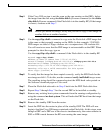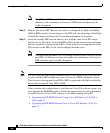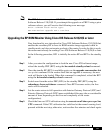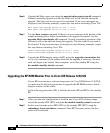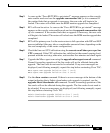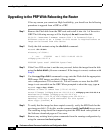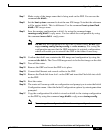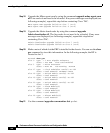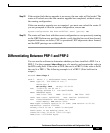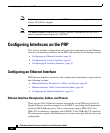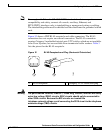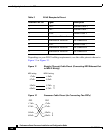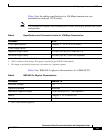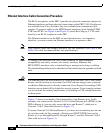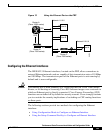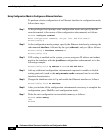
43
Performance Route Processor Installation and Configuration Guide
OL-11656-01
Upgrading to the PRP
Step 22 If the routine finds that an upgrade is necessary, the new code will be loaded. The
router will reload once the rom-monitor upgrade has completed, without saving
the running configuration.
If the rom-monitor upgrade was not required, you must now reload the router. If
you are prompted to save the system configuration, answer no.
System configuration has been modified. Save? [yes/no]: no
Step 23 The router will now boot with the correct configuration as was previously running
on the GRP. Perform any post-boot checks: verify that the line cards have booted,
required interfaces are active, CEF is operational, IGP adjacencies have formed,
and the BGP peerings are established.
Differentiating Between PRP-1 and PRP-2
You can use the software to determine whether you have installed a PRP-1 or a
PRP-2. Use the command show diags prp-slot-number and examine the value in
the HW config field. If the value is 0x10, the card is a PRP-2; if the value is 0x00,
the card is a PRP-1. The following example is of a PRP-2 (Note bold text in
output.):
Router# show diags 5
SLOT 5 (RP/LC 5 ): Performance Route Processor
MAIN: type 96, 800-23469-01 rev ;7
Deviation: 0
HW config: 0x10 SW key: 00-00-00
PCA: 73-8812-02 rev 80 ver 2
Design Release 0.0 S/N SAD0734045M
MBUS: Embedded Agent
Test hist: 0x00 RMA#: 00-00-00 RMA hist: 0x00
DIAG: Test count: 0x00000000 Test results: 0x00000000
FRU: Linecard/Module: FRU number not known
Route Memory: MEM-PRP/LC-1024=
MBUS Agent Software version 01.50 (RAM) (ROM version is 02.20)
ROM Monitor version 17302099
Primary clock is CSC 1 Board is analyzed
Board State is IOS Running (ACTV RP )
Insertion time: 00:00:00 (00:31:03 ago)
DRAM size: 1073741824 bytes



